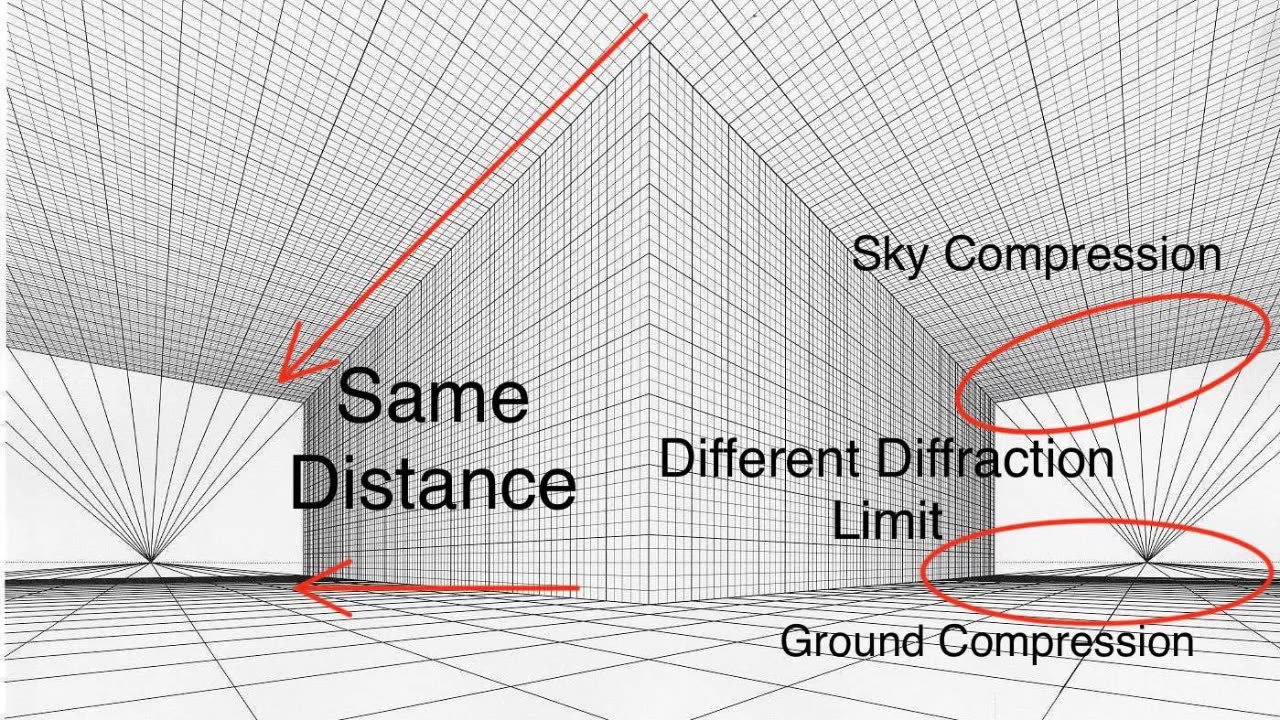Premium Only Content

If the Earth was flat, How could the Sun set?
If the Earth was flat, How could the Sun set?
The Sun never sets.... it only moves far enough away to become unresolvable, and eventually takes its daylight with it.
Perspective, observer height, the diffraction limit, the attenuation of light, and angular resolution limit all contribute to the visual phenomenon of objects appearing to disappear bottom-up at a distance.
The eye's resolution angle, which is the minimum angle at which two points can be distinguished as separate, also plays a crucial role in the perception of objects at a distance. An example involving two equal-sized balls at a given distance [pictured below], one above the observer's line of sight appears smaller as it moves away, while the one below appears larger. They also illustrate that there is a specific angle at which objects disappear from sight, referred to as Θ (theta), and this angle is reached sooner for objects below the eye line.
Keep in mind that for the object to disappear entirely, or become completely unresolvable, theta must be diminished to zero both above and below.
The images below illustrate how angles of sight compress or expand based on the observer's height and how objects of different heights are perceived by the human eye. They convey that as an observer lowers their height, the angles close to the ground compress, making the horizon appear closer. Changing the observer's height affects the angles of sight, compressing them more at the bottom (ground level) than at the top (sky level). This alteration results in a change in how information is visually processed and how far one can see. Conversely, the angles above expand. An object traveling at a higher altitude would show little change in angular size before it sets into the lower horizon. Although the total number of potential angles of vision above and below the eye line is the same, the compression rate of these angles differs. This variance in compression affects how objects are visually perceived as they move away from the observer.
Objects can seem to disappear or "set" into the horizon or other larger objects (like buildings) when viewed from certain angles. When one looks up at a very steep angle, the floors towards the top of a building compress visually, making it harder to discern details or even see the highest floors. This compression of angles leads to a loss of information and contributes to the "disappearance" of objects that are not actually obscured by any physical barriers. Also, there are of course atmospheric conditions such as aberrations and refraction that can alter the perceived size and shape of distant objects.
The higher the ceiling, the steeper the angular compression, and the faster the descent rate to the vanishing line.
This is EXACTLY how the sun and moon appear to set, maintaining a relatively constant size due to their high upper boundary and short travel distance within the observer's perspective before they meet the horizon line.
Taller objects, those exte
-
 12:35:13
12:35:13
Anti-Disinfo League
4 days ago#FlatEarthFridays Ep. 123 hosted by @100KryptoKeyz & @LevelHeadzHQ
1.33K -
 1:01:17
1:01:17
The StoneZONE with Roger Stone
13 hours agoChristmas Edition: Why the Panama Canal is Part of the America First Agenda | The StoneZONE
102K33 -
 18:12:15
18:12:15
LFA TV
1 day agoLFA TV CHRISTMAS EVE REPLAY
123K14 -
 13:32
13:32
Scammer Payback
14 hours agoChanging the Scammer's Desktop Background to his Location
1.21K2 -
 4:21
4:21
BIG NEM
16 hours agoNikola Tesla's Secret to Cultivating Creativity & Genius
851 -
 15:03
15:03
The Anthony Rogers Show
1 day agoAnthony Rogers - Live at Cusumano's Pizza (Upstairs)
1671 -
 4:33:48
4:33:48
tacetmort3m
1 day ago🔴 LIVE - THE ZONE KEEPS PULLING ME BACK - STALKER 2 - PART 15
65.1K12 -
 22:45
22:45
Brewzle
20 hours agoI Went Drinking In A Real Bourbon Castle
46.5K4 -
 48:36
48:36
PMG
1 day ago $3.77 earned"Parkland Parent Speaks Out On Kamala Harris Using Victims"
38K12 -
 4:06
4:06
The Lou Holtz Show
19 hours agoCoach Lou Holtz’s Heartfelt Christmas Message 🎄 | Family, Faith & Notre Dame Spirit 💚 #christmas
28.1K